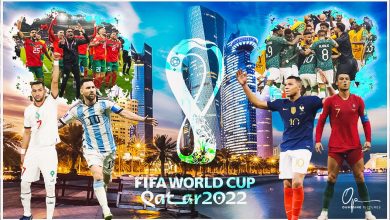Culture
Storytelling in Morocco: Moving from a Mere Resurrection to Understanding
Oussama Raqui is a high school teacher of English. He got his BA from Chouaib Doukkali University, Eljadida. He writes articles and modern essays.
Youssoufia, Morocco
Six years ago, I decided to visit my grandmother at her home for the sake of finding out the reasons that made her such an amazing storyteller. When I reached the place, I heard so many voices coming from the inside. Stepping into the door, I found the house full of laughter. My aunt’s children hugged me so tightly that it was hard for me to walk to the living room where most of my family members were. My grandmother was sitting in the middle of the room holding attention as usual. They were all happy to see me. As soon as I sat down, my imagination started working. Everybody was talking and making gestures. Yet, for a while, I was not listening to their voices but those of the past when my uncle and I used to gather and surround my grandmother who told us fascinating stories. At that moment, the wish of listening to an old story pervaded my spirit.
One of my aunt’s children came to me, and I started playing with him. The little boy shifted my concern by his smart laugh, and I found it cheering fighting with him. To my amazement, the room became silent, and only my cousin’s voice and mine were heard. Everybody was looking at my grandmother.
She started a story!
I stood up and headed towards the group. The story was about a person called Moulay Brahim. My grandmother said he had been passing by the countryside near Marrakech with his friends, and they had wanted water to make ablutions but had not found it. She added that Moulay Brahim had told his friends he would ask Allah to show them the way to find water. Then, he took a stick and hit the ground. In that spot, water popped. She said that at that place he settled and lived most of his life and has been considered as a saint ever since. Storytelling in Morocco is an important component of Moroccan culture and should be studied rather than resurrected.
Storytelling can be described as an apprenticeship which was practiced without necessarily being an educated person as it is mentioned in the article ‘Keeping a Moroccan Tradition Alive, One Tale at a Time.’ Although he [the storyteller] could barely read and write, he learned his trade by listening to older bards and imitating them.” (Mr Jabiri qtd. in Simons). This method of learning enabled the storytellers to use some techniques and tricks to hold their audience: “Some may start a fake fight to attract listeners… Sarouh, a very strong man who is dead now, would lift a monkey up into the air.” (Goytislo qtd in Simons).
Those techniques and others made storytelling popular at a certain time in Morocco. It was a kind of entertainment that played a crucial role in the everyday life of Moroccans just as the Internet and mobile phones are of great importance nowadays. To see a man telling a story in front of you was something special that changed the routine of daily life. The sentence “storytellers used to hold a respected place in local markets and town squares around Morocco, recounting legends, tales and history to a mainly illiterate audience”, (“Morocco’’,14 September 2009), shows that storytellers were in every place to the extent that they became an essential part in the lives of people.
The stories that were told in the past are treasures not to be wasted. They might be entertaining or moralizing sometimes. In addition, we can learn from them about some historical facts. “The III-Omened story’’ written by Ahmad Abdussalam al-Baqqali (1966) and translated by Malcolm Williams is a good example of Moroccan storytelling and the role it can play in entertaining the audience. The writer used good techniques, such as suspense and the attractive introduction that held the attention of the Scouts whom he was leading and made a good impact on them. The writer’s “story left a deep impression on the children’s faces. They all kept quiet thinking about the details and then began to discuss’’ (al-Baqqali 21).
Honestly, my grandmother used similar techniques that made her story fascinating. The brief summary I mentioned at the beginning was just like the introduction used by al-baqqali. The climax of the story started when she said, “One of the rulers of the area, where Moulay Brahim settled down, decided to kill the latter. Some of his people caught a snake and cooked it in couscous as meat so that Moulay Brahim and his friends would eat from it and die.’’ At this point, there was a deep silence, and everybody thought the men would die. She added, “The ruler and his followers took the poisonous couscous to him, and he accepted it. He sat with his friends to eat altogether.’’ Suddenly, her voice changed, and she attracted the attention of all of us by moving her visions from one to another; then she said, “Moulay Brahim told the cooked snake to get out of the food, and it was transformed into its natural form and disappeared.”
I interrupted her by asking, “How could a dead snake understand the human voice?”
She replied, “Well, he was a pious man, and at that time there was Baraka.”
The story is meaningful and can be interpreted from various points. The concept ‘baraka’ was used to explain and legitimize the power of the saint. Westermarck illustrates the term in the following words:
The Arabic word baraka means ‘blessing’. In Morocco it is used to denote a mysterious wonder-working force which is looked upon as a blessing from God, a ‘blessed virtue’. It may be conveniently translated into English by the word ‘holiness’ (Westermarck qtd in Chtatou).
From the above definition we can say that the term belongs to the jargon of Moroccan popular culture in relation to Islam. The use of the concept has shaped Moroccans’ worldview and functioned as a legitimizing force in the realm of sainthood (See Maarouf 2007). If we go back to our story here, we would find a reference to a despotic ruler who tried to kill the saint Moulay Brahim. The story ends by the triumph of the latter on the former in a symbolic way. This was thanks to his baraka in a way or another. The ruler in the story is but a representation of Black Sultan. In their article “Jinn Possession as a Form of Cultural Resistance in Morocco’’, Willis and Maarouf illustrate that the Black Sultan symbolizes ruling terror and oppression in Moroccan popular mind. They argue that there are seeds of rebellion within this mystic world that might be transferred to be the basis of new forms of expression other than maraboutic rituals. In this respect, we wonder if resurrecting storytelling in Morocco will bring back and sustain the same popular cultural forms, or it is high time for new ones.
The storytelling tradition is of great importance to Moroccan youth because through it we can learn a part of our history that may not be written in books. The idea of resurrecting storytelling by Hikayat Morocco to “inspire people with their original culture”, as one of the co-founders of the group says, is one of the other movements that aim to revive this tradition. However, we should always bear in mind that storytelling has been an ideology which has sustained the miserable life of Moroccans for a long time at the bottom of social space. Storytelling tradition should be studied and understood in a wider context rather than merely resurrected.



